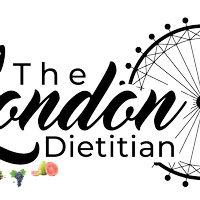Non-alcoholic fatty liver disease (NAFLD) is a condition characterised by the accumulation of fat in the cells of the liver which as the name suggests, is not attributable to alcohol; rather, other dietary and lifestyle factors. Worryingly, the age of diagnosis is gradually decreasing with even teenagers and children being diagnosed with this condition. If NAFLD Is left untreated, it can lead to the development of NASH (non-alcoholic steatohepatitis)- a more advanced form of liver disease whereby inflammation and hardening of the liver cells are additional features. Eventually, these can all lead to liver cirrhosis where the liver becomes scarred and unable to function properly, in addition to increasing the risk of liver cancer. This will be a huge problem since the liver plays very important roles in most of the processes involved in the body.
This disease is becoming increasingly prevalent in the UK and the main cause appears to be lifestyle factors, such as diet and physical activity. The pathogenesis of NAFLD is still not completely understood, however we do know that by removing the root cause and giving the liver the opportunity to repair itself can be of great benefit. If you have been diagnosed with NAFLD, the following lifestyle changes are key to begin reversing this condition.
1) Weight
The evidence regarding weight and fatty liver is clear. The more fat you carry around your abdomen, the more visceral fat you will have, leading to a greatly enlarged liver. Several studies have shown that a 5-10% decrease in body weight can help to control and, in some instances, reverse NAFLD. It is advised that any weight loss is gradual (0.5-1kg) in order for weight loss to be sustainable and changes to become permanent. Working with a dietitian can help guide you toward adopting healthier eating practices.
2) Saturated fat
Studies have shown that the primary factor which influences the development of NAFLD is being in a calorie surplus and gaining weight, regardless of the macronutrient profile of the diet. However, when a person is no longer in a calorie surplus, then the difference in type of fats consumed can play a role in promoting fat accumulation in the liver. Studies suggest that a diet high in saturated fat can lead to liver fat accumulation to a greater extent than a diet higher in poly-unsaturated or mono-unsaturated fats. The latter two fats are thought to have protective roles against liver fat. When it comes to saturated fat, people should be encouraged to have less than 10% total energy intake per day, in keeping with general healthy eating guidelines. Saturated fat is found in butter, coconut oil, lard, pastries, the visible fat on meat and fried foods. Sources of poly and mono-unsaturated fats include vegetable oils, olive oil, fish, avocado, nuts and seeds
3) Sugar
Fat in your liver doesn’t just come from eating fat. There is a process in our body called de novo lipogenesis (DNL) whereby the liver synthesises fatty acids from non-fat sources; this is primarily from consuming too much carbohydrate, particularly free sugars. In healthy people who do not have NAFLD, this contribution is relatively small (at about 5%). However, in people who have NAFLD, this process is substantially increased and may be up to 22-24%.
In recent years, fructose has attracted much attention as being the leading free sugar causing fat in the liver. Interestingly, in overfeeding studies (whereby participants consume more calories than needed), no difference is seen between fructose and any other sugar in increasing the level of fat accumulation. Therefore, it appears that the increase in liver fat comes from overconsuming calories and the associated weight gain, not the actual sugar itself per se. Since we tend to overconsume sugar in general, it is a good idea to reduce the intake of high sugar foods in order to avoid being in an overfed state which can lead to DNL .
4) Specific nutrients of interest
When it comes to NAFLD, there are a few nutrients that have been looked at that may play roles in reducing the liver fat: Vitamin E, omega 3 and garlic supplements.
Oily Fish and Fish oils
In recent years, there has been considerable interest in the health benefit of fish and fish oils, due to their omega 3 fatty acid content. Since omega 3 has been shown to reduce blood lipid levels, it has been theorised that it can also help to reduce liver fat and lower the associated liver inflammation. Different studies have used varying doses (1-3g) of omega 3 supplementation and the findings have been inconsistent. Some studies did show a therapeutic benefit such as improved liver enzyme levels and reduction in the inflammation of the liver. In contrast, other studies did not show any promising benefits. In view of this, it is prudent to advise that patients with NAFLD should aim to have 2-3 portions of oily fish weekly and if they cannot tolerate, then an omega 3 supplement of 1-2g per day is unlikely to cause harm. Be aware that higher doses of more than 3g have been shown to reduce the effectiveness of blood thinner medication so it’s a good idea to have a chat with your GP if you are taking any blood thinners.
Vitamin E
A number of small studies have looked at vitamin E supplementation and reduction of liver fat. Patients were given doses between 300-800IU and the findings from these studies were inconclusive. Two studies with much higher doses- up to 1000IU per day did show significant improvements in liver fat. Due to the conflicting results and data that suggests that high doses of vitamin E (more than 400IU/day) may increase the risk of stroke and all-cause mortality, vitamin E is currently not recommended as a treatment option.
Garlic Supplement
There is limited research to suggest that garlic can help reduce fat in the liver. The literature has shown that a dose of 800mg/day can be effective. However, since only one clinical trial has specifically looked at the effectiveness of garlic supplementation in NAFLD, more research is needed before we can conclusively say that garlic supplementation is indeed effective. Additionally, the trial had a small number of participants and the stage of their NAFLD was severe, thus making it difficult to extend this general advice to all people with NAFLD. However, no adverse effects were reported.
And there you have some guidelines to help guide you with which areas of nutrition you may need to work on if you have recently been diagnosed with NAFLD. If you feel that you need some more tailored advice, don’t hesitate to reach out to me and request a free discovery call!

